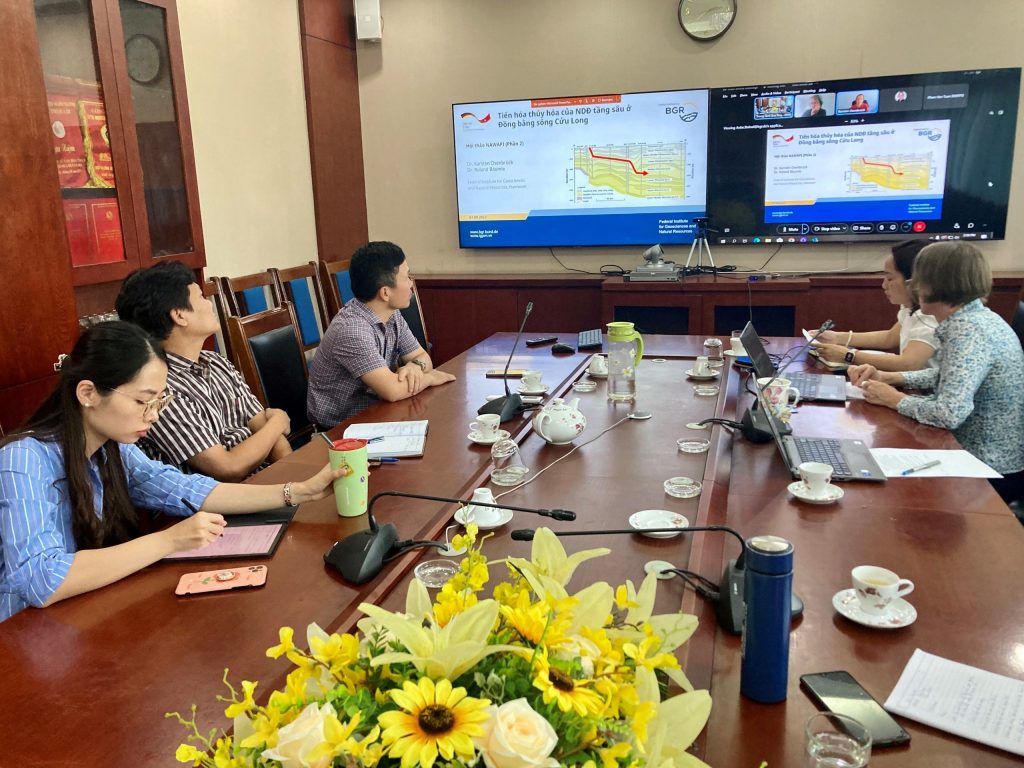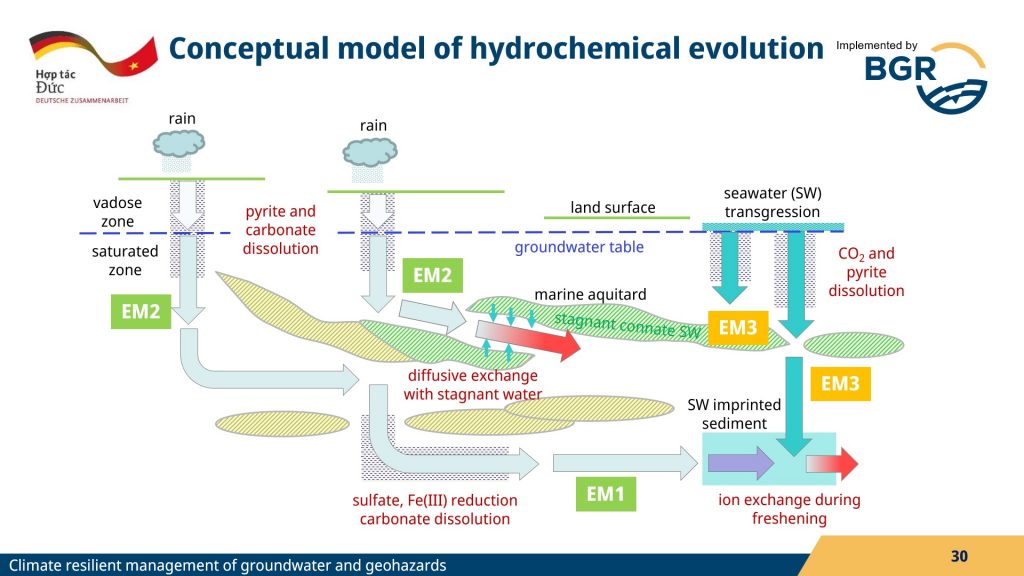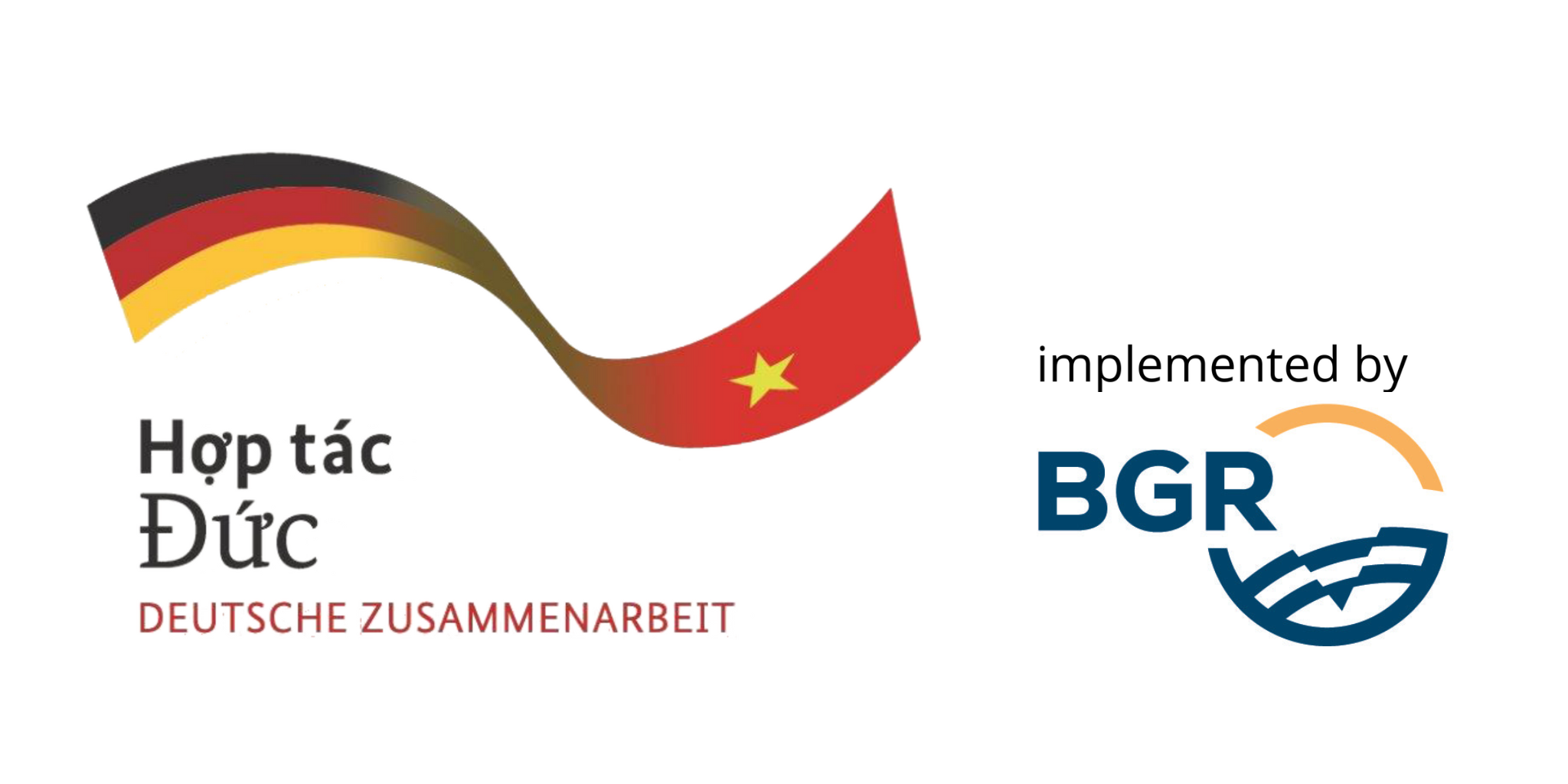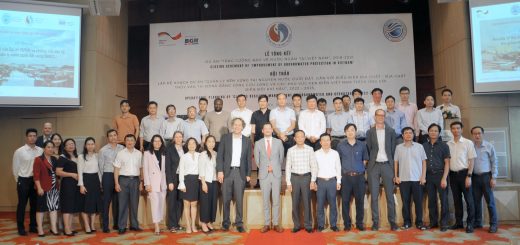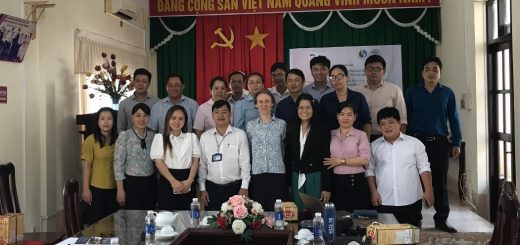Seminar on groundwater quality
On 7 September 2023, CRMGG and NAWAPI met for the second seminar on the results of the groundwater sampling campaign conducted jointly with NAWAPI South Division in the national groundwater monitoring wells in the Mekong Delta in April 2021. The first seminar in this series took place on 5 May 2022 and described the concept, the field sampling process, and the comparison of analytical results by NAWAPI and CRMGG.
Dr. Trieu Duc Huy (Deputy General Director of NAWAPI) welcomed all participants and stressed that groundwater quality aspects will becoming increasingly important, including for NAWAPI’s work. Andreas Renck, BGR Team Leader, emphasised that groundwater will be a vital cornerstone for climate resilience in the Mekong Delta and hoped that the final assessment of the collected data would provide conclusions for the future management of groundwater.
Dr. Anke Steinel showed that the groundwater chemistry, isotopes and 14C values did not show a consistent pattern for the aquifers or a clear regional trend. Hence, the data were interpreted further using a global approach (i.e. an interconnected aquifer system instead of several distinct aquifers).
Dr. Karsten Osenbrück described that there are likely to be three water types (or end-members) based on modelling with PHREEQC:
- EM1: fresh groundwater at an advanced stage of geochemical evolution with higher pH and dissolved inorganic carbon
- EM2: fresh groundwater at the beginning of geochemical evolution with low pH due to pyrite dissolution in the unsaturated zone
- EM3: seawater in contact with soil CO2 and/or after pyrite dissolution now trapped as connate seawater in layers with low hydraulic conductivity
The two main mixing mechanisms for these three water types would be molecular diffusive exchange between EM2 + EM3 and mixing of EM1 + EM3 due to the construction of wells and groundwater abstractions. Based on the radiocarbon dating results, interactions must have taken place within the younger sediments where the carbonates as well as the organic matter are still containing 14C concentrations.
The ensuing discussion highlighted the need for further evaluation of the data to determine whether regional flow paths could be detected and to compare these results with those of other studies.
